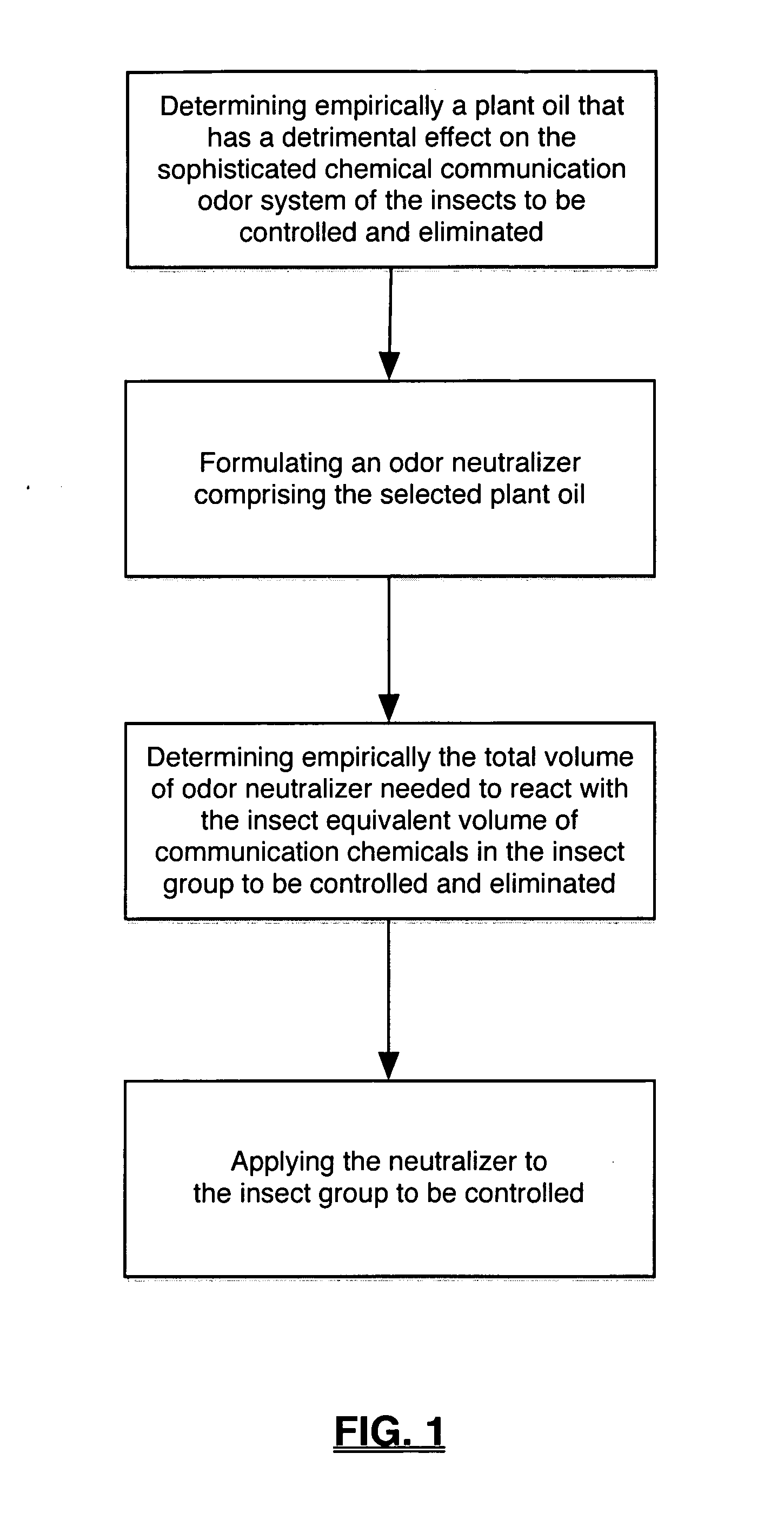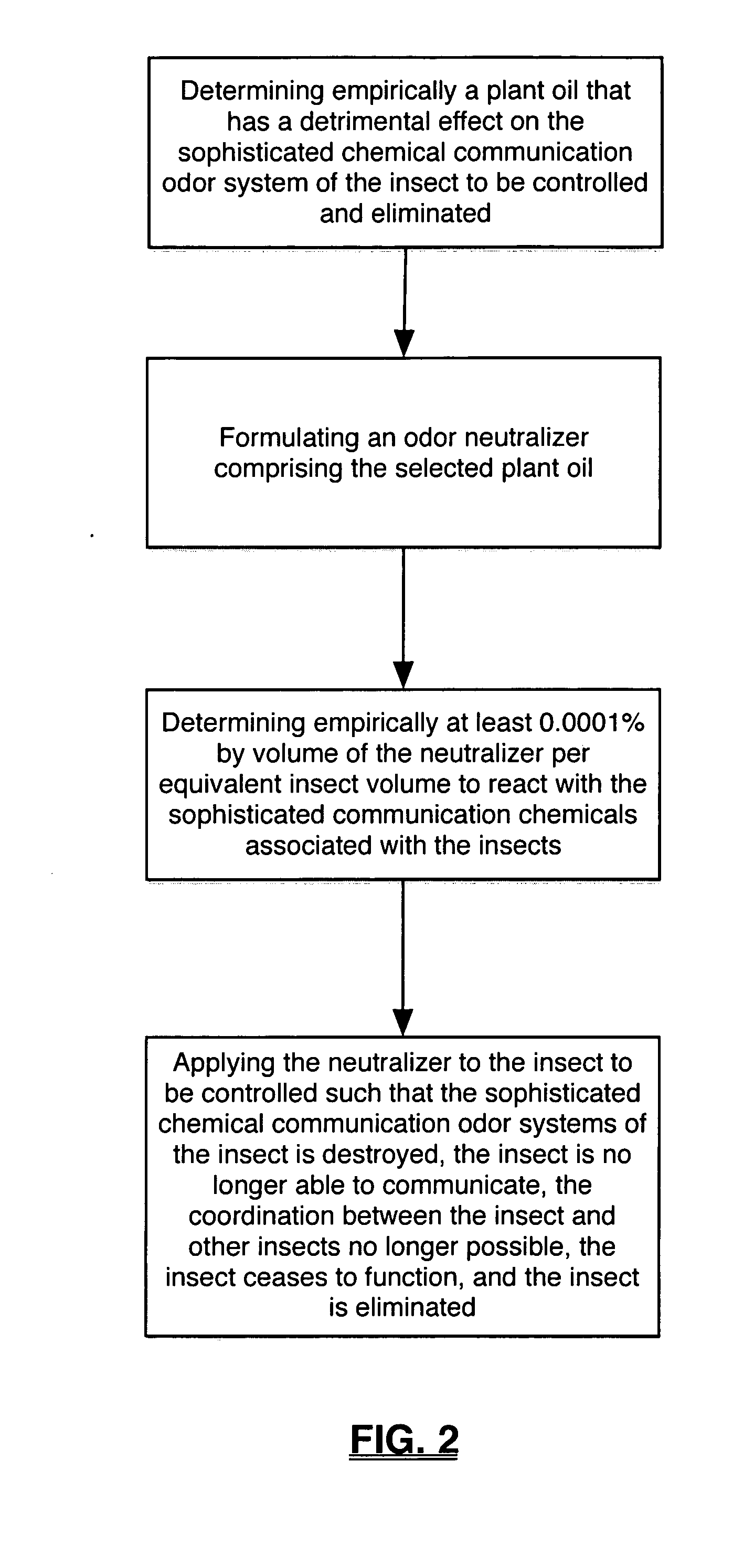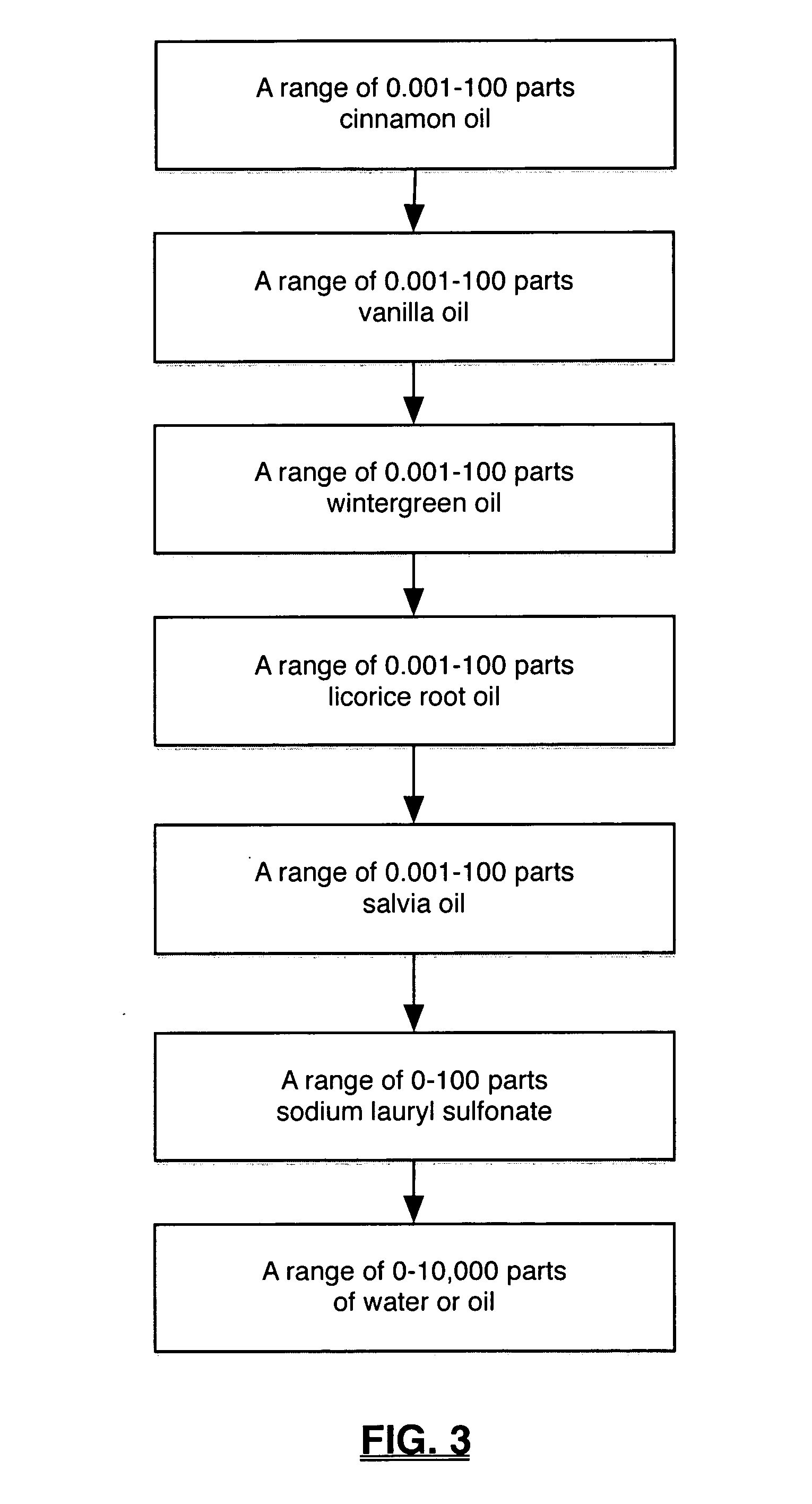Insect control and elimination method and composition
a technology of insect control and composition, applied in the directions of biocide, dead animal preservation, plant/algae/fungi/lichens ingredients, etc., can solve the problems of ineffective and unfavorable use of pesticides, ineffective use of pesticides, and ineffective use, so as to and eliminate sophisticated chemical communication systems
- Summary
- Abstract
- Description
- Claims
- Application Information
AI Technical Summary
Benefits of technology
Problems solved by technology
Method used
Image
Examples
Embodiment Construction
[0062]Reference will now be made in detail to the present preferred embodiments of the invention as described in the accompanying drawings.
[0063]A method of eliminating sophisticated chemical communication system between and among inspects, especially where inspects live in functional social groups such as mounds swamps, nests, colonies, hives and other inter-dependent groups is disclosed.
[0064]An odor neutralizer is applied directly into or in near proximity of the social group. The odor neutralizer chemically eliminates and chemically modifies the sophisticated chemicals and pheromones the insects use to communicate and function as groups and individuals. A pheromone is a chemical secreted by an animal, especially an insect, that influences the behavior or development of others of the same species, i.e., a chemical substance that is usually produced by an animal and serves especially as a stimulus to other individuals of the same species for one or more behavioral responses.
[0065]...
PUM
 Login to View More
Login to View More Abstract
Description
Claims
Application Information
 Login to View More
Login to View More - R&D
- Intellectual Property
- Life Sciences
- Materials
- Tech Scout
- Unparalleled Data Quality
- Higher Quality Content
- 60% Fewer Hallucinations
Browse by: Latest US Patents, China's latest patents, Technical Efficacy Thesaurus, Application Domain, Technology Topic, Popular Technical Reports.
© 2025 PatSnap. All rights reserved.Legal|Privacy policy|Modern Slavery Act Transparency Statement|Sitemap|About US| Contact US: help@patsnap.com



